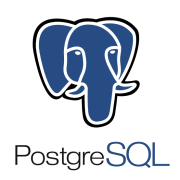Vector Databases are specialized systems designed to store and retrieve high-dimensional data, supporting processes like machine learning and artificial intelligence by efficiently handling vectors. Their architecture optimizes similarity search and data analysis, ensuring rapid data access.
Vector Databases utilize structures like HNSW and FAISS to manage vectors, facilitating swift similarity searches. By leveraging indexing and retrieval mechanisms, these databases are crucial for applications in search engines, recommendation systems, and NLP tasks. Their design supports the scalability and dynamic nature of AI and ML workloads, ensuring real-time processing and insights.
What are the critical features of Vector Databases?Adoption across industries showcases the adaptability of Vector Databases. In finance, they're used for fraud detection, processing large transaction datasets to identify anomalies. Retail leverages them for recommendation engines, customizing shopping experiences based on user preferences. Healthcare employs them for image recognition in diagnostics, ensuring precise and timely analysis.
Implementing Vector Databases offers businesses an efficient way to manage increasing data complexities, driving innovations in AI and machine learning. Their ability to swiftly process and analyze large-scale vector data is crucial for organizations seeking to enhance operational efficiency and competitive advantage.




























Vector Databases enhance search accuracy by utilizing embeddings derived from deep learning models. These embeddings transform data into vectors in high-dimensional space, allowing Vector Databases to measure similarity between data points more effectively than traditional databases. This approach enables the retrieval of semantically similar results, greatly improving the relevance of search outputs. When dealing with large datasets, this method becomes essential for businesses seeking precise and context-aware search capabilities.
What industries benefit the most from Vector Databases?Industries that handle large volumes of unstructured data, such as e-commerce, healthcare, and social media, benefit significantly from Vector Databases. In e-commerce, they aid in recommending products by understanding user preferences better. In healthcare, they assist in analyzing complex medical data to improve diagnostics. Social media platforms use them to filter content intelligently and personalize user experiences, enhancing engagement and satisfaction.
Can Vector Databases handle scalability challenges?Yes, Vector Databases are designed to handle scalability challenges. They use distributed computing and data partitioning techniques to manage large datasets efficiently. By balancing the load across multiple nodes, these databases ensure quick response times and maintain performance as data grows. This capability is crucial for businesses experiencing rapid data accumulation, ensuring that their systems remain responsive and robust under heavy load.
What are the integration challenges with existing systems when adopting Vector Databases?Adopting Vector Databases often involves integration challenges such as ensuring compatibility with existing data structures and workflows. Businesses need to transition from scalar-based data models to vector-based ones, which may require significant adjustments. Additionally, training and tuning machine learning models for effective vectorization can be complex. Organizations must address these challenges by upskilling teams and possibly modifying their infrastructure to fully leverage the benefits of Vector Databases.
Why are Vector Databases crucial for AI-driven applications?Vector Databases are crucial for AI-driven applications because they enable efficient and accurate processing of complex data patterns. They store data as vectors, allowing AI models to rapidly perform similarity searches, which is essential for tasks like recommendation engines, anomaly detection, and natural language processing. By providing a foundation for real-time and contextually relevant data retrieval, Vector Databases enhance the performance and effectiveness of AI-driven systems, enabling businesses to offer smarter and more personalized solutions.